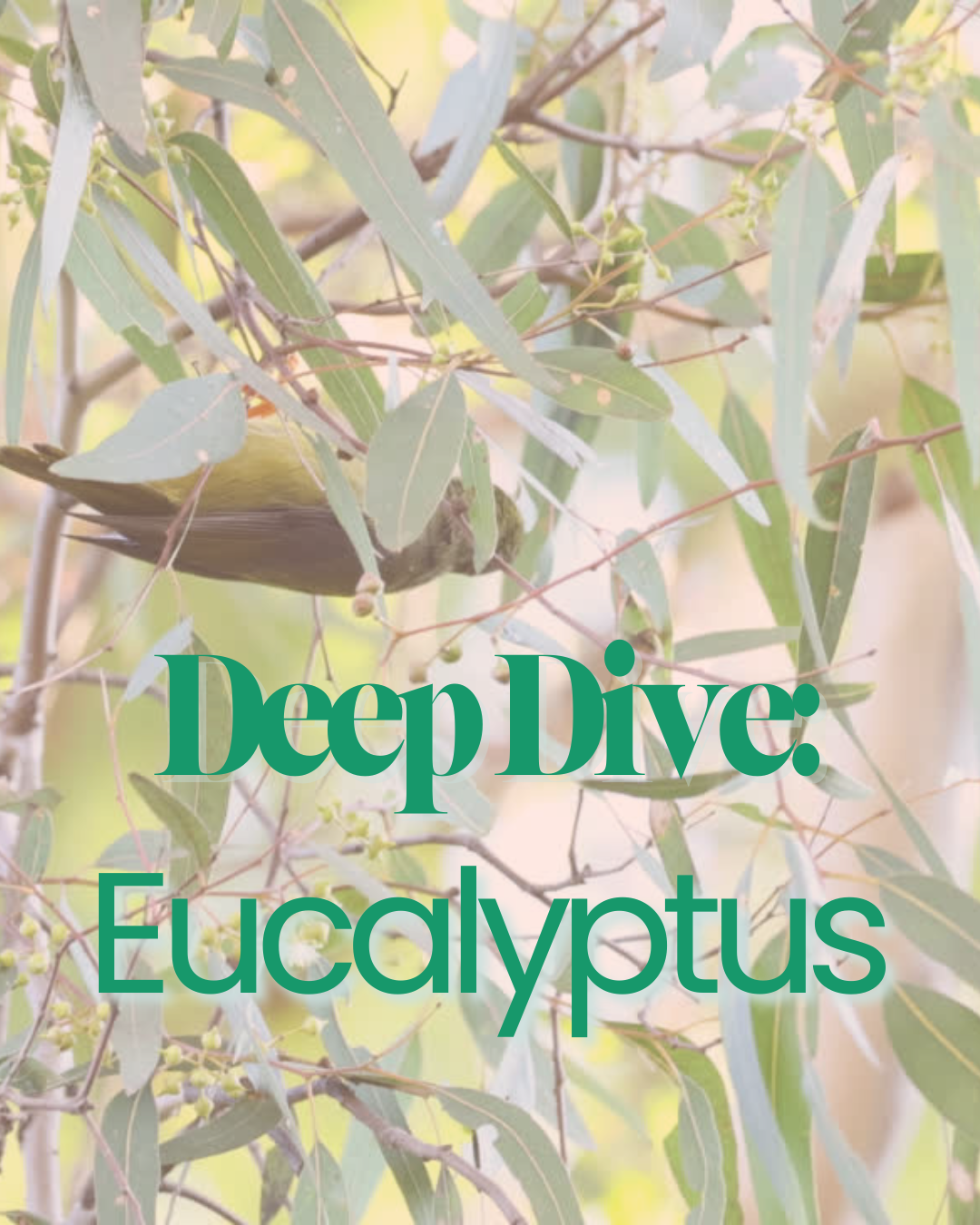🌿 Eucalyptus: From Ancient Remedy to Modern Relief
A Deep Dive into Eucalyptus and Why It Belongs in Your Topical Ritual
💨 Introduction
You’ve probably seen eucalyptus listed on everything from bath products to muscle rubs to essential oil blends. But this is not just another trendy “fresh scent.”
Eucalyptus — especially species like Eucalyptus globulus and Eucalyptus radiata — is a medicinal powerhouse that’s been used for generations, particularly by Indigenous Australians, for its effects on the respiratory system, skin, and muscles.
At Blunt Botanicals, we include eucalyptus in our Jointment line because it supports real recovery: deeper breathing, muscle relief, and systemic calm — without synthetic fillers or commercial shortcuts.
🌿 What Is Eucalyptus?
Eucalyptus is a fast-growing evergreen tree native to Australia, with over 700 species across the globe today. The oils extracted from its leaves — particularly from E. globulus and E. radiata — are rich in 1,8-cineole, also known as eucalyptol.
This naturally occurring compound gives eucalyptus its signature sharp, clean scent — but more importantly, it offers a host of physiological benefits when used topically and aromatically.
🪶 Traditional Uses: Indigenous Medicine
For thousands of years, Indigenous Australian communities have turned to eucalyptus as a multi-functional plant medicine:
-
Inhaled to relieve chest congestion and ease breathing
-
Used in poultices for wounds and muscle pain
-
Applied to skin for insect bites, infections, and inflammation
-
Burned or infused in sweat lodges for purification and spiritual clearing
Eucalyptus leaves were seen as sacred, and their use was always intentional and ceremonial — a perspective we deeply respect and acknowledge as we work with this plant today.
🔬 Eucalyptus in Modern Science
Eucalyptus has been extensively studied in contemporary herbalism and pharmacology — especially for the following actions:
✅ Anti-inflammatory
1,8-cineole has been shown to reduce inflammation by modulating cytokine activity — making it useful in managing muscular soreness, joint tension, and post-exercise recovery.
✅ Decongestant + Respiratory Support
Inhaling eucalyptus vapours helps open airways, reduce sinus pressure, and ease cough — which is why it’s also used in our bath-based rituals.
✅ Antimicrobial
Eucalyptus oil shows strong activity against certain bacteria and fungi, supporting skin integrity in topicals that stay on the body longer.
🧴 How We Use Eucalyptus at Blunt Botanicals
Eucalyptus isn’t just “in” our formulas — it’s part of a functional plant system we’ve crafted with care. You’ll find it in all three products in our Jointment line:
💪 Jointment Whipped Massage Butter
Eucalyptus helps carry other botanicals — like arnica, birch, and marjoram — deeper into sore joints and tissues. The scent helps regulate breath and promote calm while the compounds go to work on the physical body.
🖐️ Use post-workout, before bed, or after long days on your feet.
🛒 Jointment To Go
Same terpene and essential oil profile, designed for portability and fast absorption. Ideal for quick hits of relief — neck, lower back, shoulder, hands — wherever it hurts.
🖊️ Pro tip: Keep one in your gym bag, purse, or car. It’s a ritual extender.
🛁 Jointment CBD/CBN Bath Salts
Here, eucalyptus meets full-body immersion. As the bath salts dissolve, eucalyptus oils are activated in the steam — offering a dual benefit of respiratory release + muscle recovery.
Paired with CBD, CBN, and pink mineral salts, this is your nervous system’s “reset” button.
🌱 Why It Matters
When we formulate topicals, we ask three questions:
-
Does this ingredient work — physiologically?
-
Does it play well with others — in a synergistic formula?
-
Does it honour its origins — and our customers' values?
Eucalyptus passes all three.
It’s powerful, proven, and deeply tied to a history we respect. That’s why we source it responsibly, formulate with intention, and always use it where it makes sense — not as filler, not for trend, and never without purpose.

